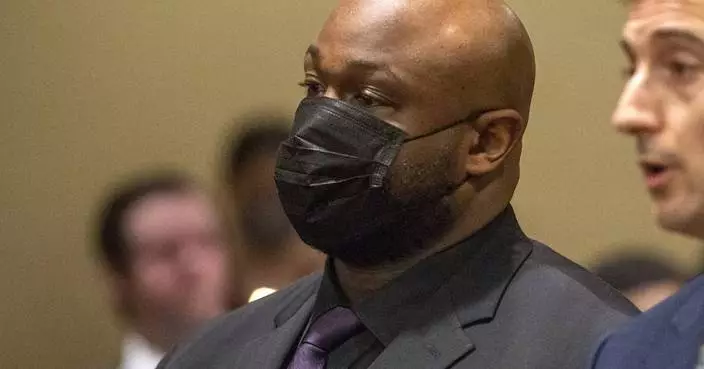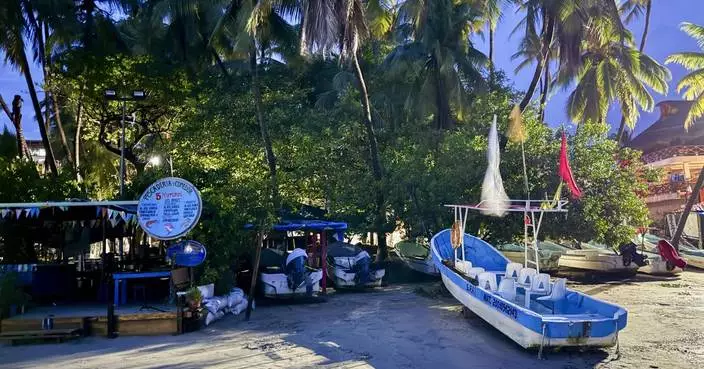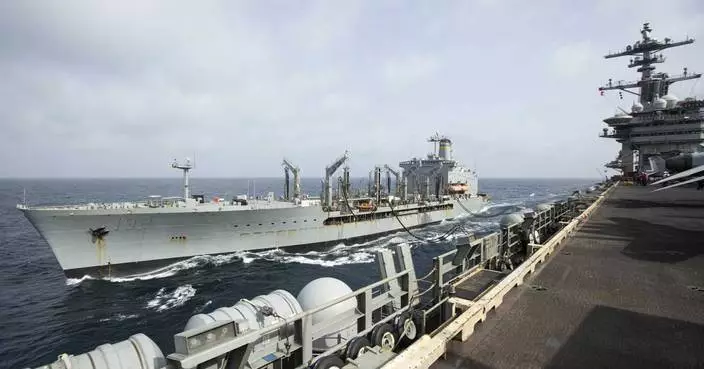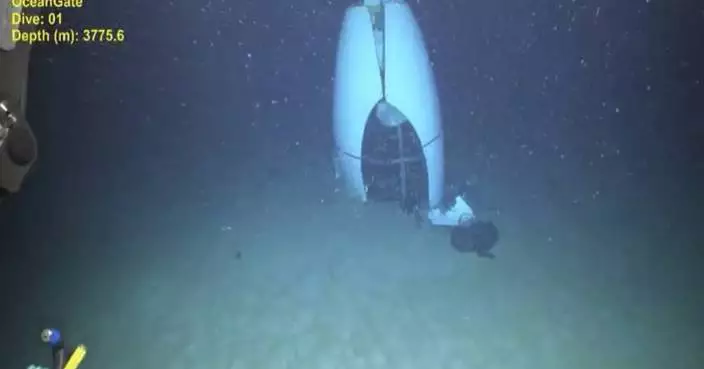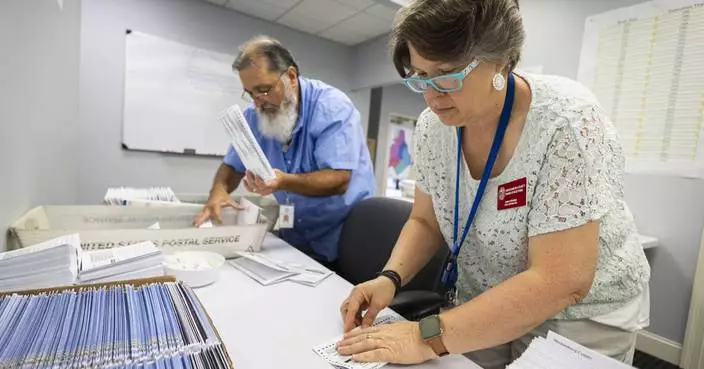MARQUELIA, Mexico (AP) — Former Hurricane John dissipated over Mexico on Tuesday after barreling into the country’s southern Pacific coast overnight, leaving two dead and a trail of destruction in its path.
Currently a tropical depression, John was 70 miles (115 kilometers) northwest of Acapulco and moving northwest at 3 mph (6 kph) as it dawdled along the coastal mountains and continued to weaken.
Click to Gallery
MARQUELIA, Mexico (AP) — Former Hurricane John dissipated over Mexico on Tuesday after barreling into the country’s southern Pacific coast overnight, leaving two dead and a trail of destruction in its path.
Boats are stored on the beach for protection ahead of the anticipated arrival of Tropical Storm John in Puerto Escondido, Mexico, Monday, Sept. 23, 2024. (AP Photo/Luis Alberto Cruz)
Hurricane John strikes Mexico’s southern Pacific coast with 'life-threatening' flood potential
This National Oceanic and Atmospheric Administration satellite image taken at 6:10pm ET shows Hurricane John near southern Mexico on Monday, Sept. 23, 2024. (NOAA via AP)
Hurricane John strikes Mexico’s southern Pacific coast with 'life-threatening' flood potential
John grew into a Category 3 hurricane in a matter of hours Monday and made landfall about 80 miles (130 kilometers) east of the resort of Acapulco, near the town of Punta Maldonado, with maximum sustained winds of 120 mph (190 kph) before declining to a tropical storm after moving inland. It was downgraded on Tuesday to remnants with maximum sustained wind speeds of 35 mph (55 kph), the U.S. National Hurricane Center said. Mexican authorities discontinued all tropical storm warnings.
It blew tin roofs off houses, triggered mudslides and toppled scores of trees, officials said Tuesday.
Evelyn Salgado, the governor of the coastal state of Guerrero, said two people died when the storm sent a mudslide crashing into their house on the remote mountain of Tlacoachistlahuaca (TLAH-ko-chis-tla-waka), further from the coast.
After warning that the potentially catastrophic flash flooding and mudslides in some Mexican states, the U.S. National Hurricane Center said the main concern on Tuesday morning was flash flooding in parts of southern and southwestern Mexico in the coming days.
Lincer Casiano Clemente, the mayor of the town of Marquelia, near where the hurricane hit on the coast, said early Tuesday that “there are a lot of houses, mainly the ones with sheet roofing, where the force of the air blew off the roofing.”
The mayor said no deaths or injuries had been reported in Marquelia so far, something he attributed to his ability to warn residents of the storm's approach. But power was knocked out along large parts of the coast, and highways were blocked by fallen trees. The government said some 60,000 people remained without power.
“We've never seen such strong gusts,” the mayor said. By Tuesday morning, people were out looking for food, he said.
Monday's unexpected surge in strength caught scientists, authorities and residents of the area by surprise, something AccuWeather Senior Meteorologist Matt Benz attributed to warmer oceans, which add fuel to hurricanes.
As a result, surprise surges in hurricanes' strength have become increasingly common, Benz said.
“These are storms that we haven’t really experienced before,” he said. “Rapid intensification has occurred more frequently in modern times as opposed to back in the historical record. So that’s telling us there’s something going on there.”
Mexican President Andrés Manuel López Obrador warned residents of the area to be vigilant on Monday night and to bunker down in a safe place.
“Seek higher ground, protect yourselves and do not forget that life is the most important thing; material things can be replaced. We are here,” López Obrador wrote on the social media platform X.
The storm is bleak news for the region, which was walloped by Otis, a similar rapidly intensifying hurricane, in 2023.
Otis devastated the resort city of Acapulco, where residents had little warning of the strength of what was about to hit them. One of the most rapidly intensifying hurricanes ever seen, scientists at the time said it was a product of changing climate conditions.
Otis blew out power in the city for days, leaving bodies scattered on the coast and desperate family members searching for lost loved ones. Much of the city was left in a state of lawlessness and thousands scavenged in stores, scrambled for food and water.
The government of López Obrador received harsh criticism for its slow response to Otis, but authorities have since pledged to pick up their speed. Oaxaca and other parts of the Pacific coast seemed to have avoided the devastation witnessed last year in Acapulco.
President-elect Claudia Sheinbaum said her government planned to work on improving an early alert system, similar to what the country has with earthquakes.
AP writer María Verza in Mexico City contributed to this report. Follow AP’s coverage of Latin America and the Caribbean at https://apnews.com/hub/latin-america
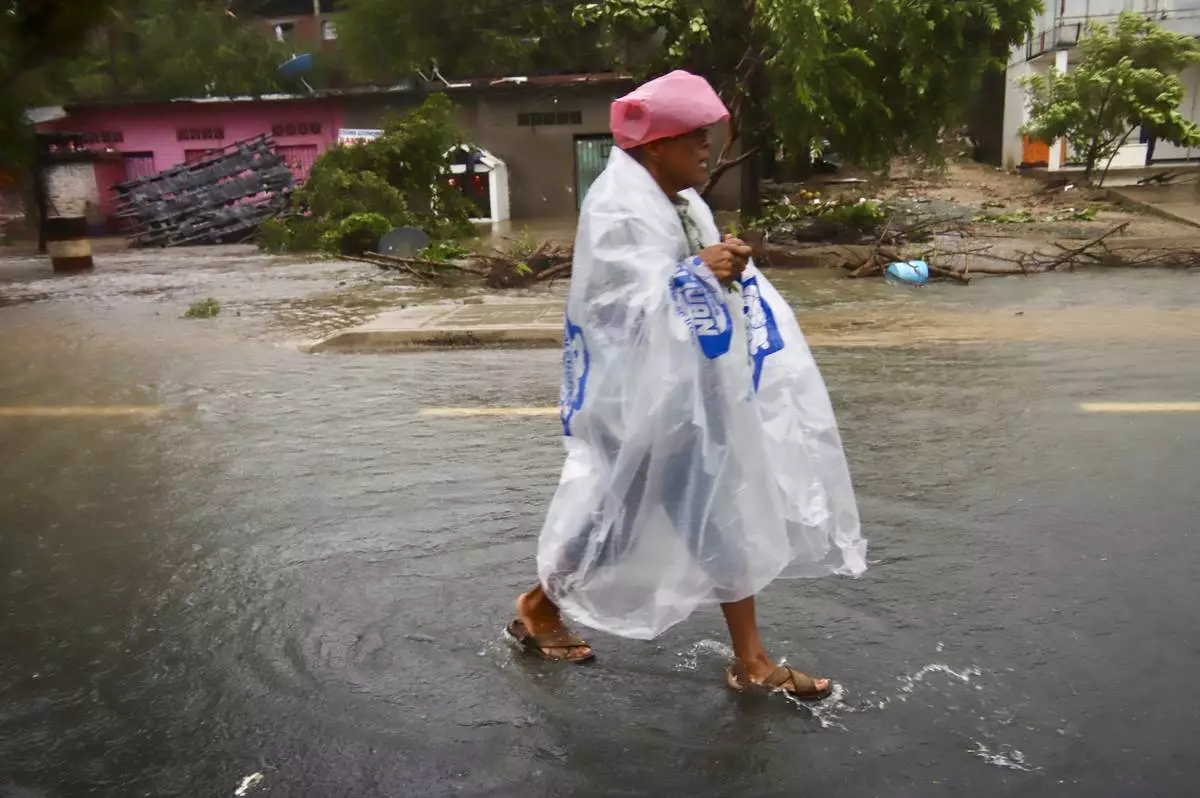
A person wearing plastic walks in the street after the passing of Hurricane John in Marquelia, Mexico, Tuesday, Sept. 24, 2024. (AP Photo/Luis Alberto Cruz)
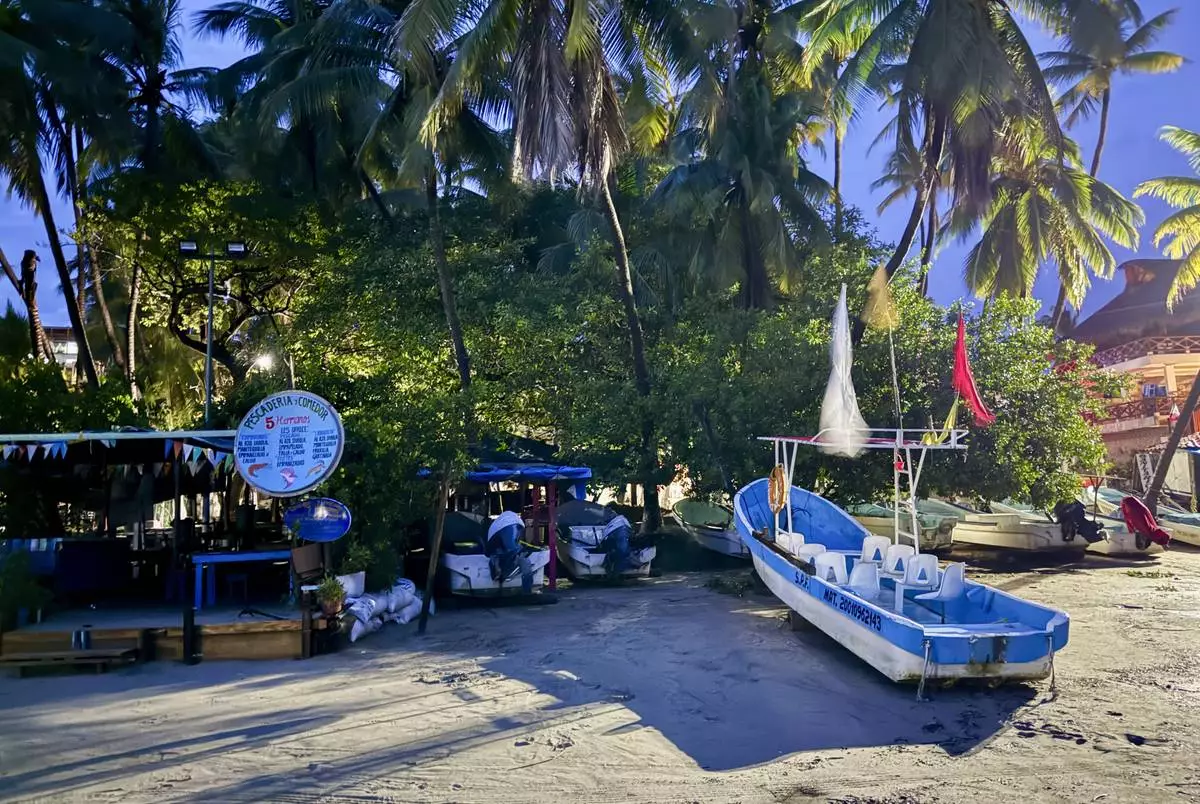
Boats are stored on the beach for protection ahead of the anticipated arrival of Tropical Storm John in Puerto Escondido, Mexico, Monday, Sept. 23, 2024. (AP Photo/Luis Alberto Cruz)
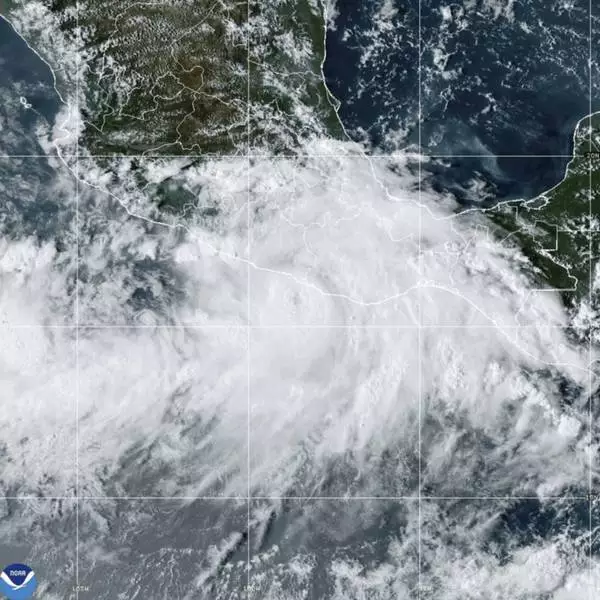
Hurricane John strikes Mexico’s southern Pacific coast with 'life-threatening' flood potential
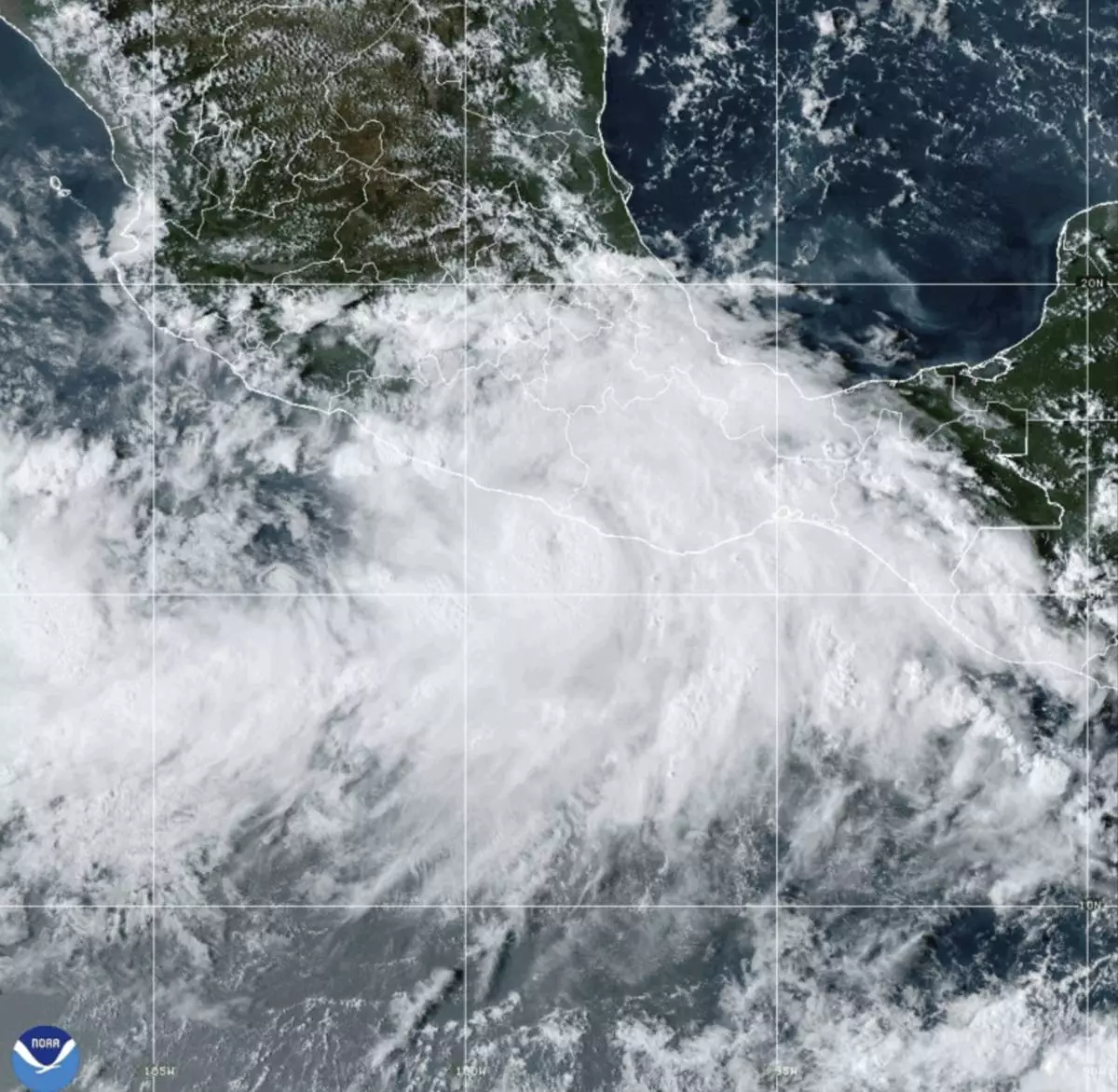
This National Oceanic and Atmospheric Administration satellite image taken at 6:10pm ET shows Hurricane John near southern Mexico on Monday, Sept. 23, 2024. (NOAA via AP)
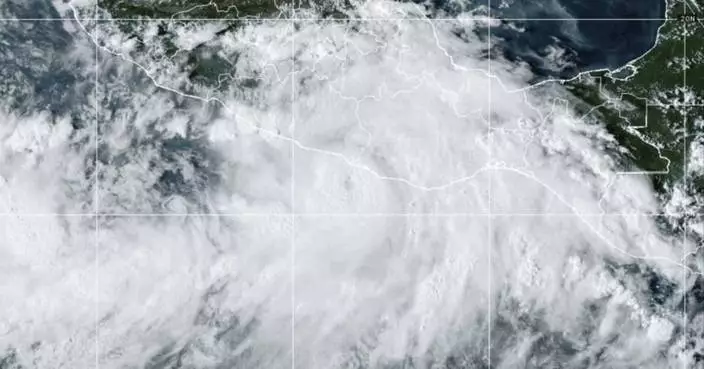
Hurricane John strikes Mexico’s southern Pacific coast with 'life-threatening' flood potential
RIO DE JANEIRO (AP) — Brazil’s President Luiz Inácio Lula da Silva opened the U.N. General Assembly on Tuesday with a call for the world to do more to combat climate change. He mentioned the fires ravaging the rainforest back home — but not the fact they're adding to criticism of his administration's own environmental stewardship.
Brazil's Amazon saw 38,000 blazes last month, the most for any August since 2010, according to data from the country's space institute. September is on track to repeat that ignoble feat. Smoke has been choking residents of many cities, including metropolis Sao Paulo that's thousands of miles away. Lula has cast these fires as the result of drought and criminals, and proposed harsher punishments for environmental offenders.
“The Amazon is going through the worst drought in 45 years. Forest fires spreading across the country have already devoured 5 million hectares (19,300 square miles) in August alone," he said in New York. "My government does not outsource responsibility nor abdicate its sovereignty. We have already done a lot, but we know that much more needs to be done.”
But enforcement has been hampered by a six-month strike at environmental regulator Ibama that ended in August — three months after his administration was aware of significantly heightened risk of fires amid the historic drought.
At the same time, members of his Cabinet have presented conflicting views of environmental and energy policies. And Lula's rhetoric about tapping oil reserves near the mouth of the Amazon River has worried environmentalists who want Brazil to drive a global transition to clean energy. This month, he promised to pave a road in the Amazon experts say will drive deforestation.
Lula’s speech was on point, but “the climate leader that the world was waiting for did not show up,” the Climate Observatory, comprised of 30 Brazilian non-profits, said in a statement.
“Climate was just one more topic in a along list of themes addressed by Lula, from the recent conflict in Lebanon to the urgency of regulating artificial inteliigence and the long-standing cry for U.N. reform,” Lula said. “The president promised to deliver this year a climate goal ... but did not offer a vision of what Brazil aims to do as chair of the COP 30 (climate summit) to accelerate the fight against this crisis.”
When Lula was last president, between 2003 and 2010, he repeatedly spoke about climate change, holding up Brazil as a beacon of conservation for the future and blaming rich countries for polluting the planet while failing to help developing nations maintain their forests. He campaigned in 2022 while presenting himself as an environmental alternative to his predecessor, Jair Bolsonaro, whose rhetoric stoked destruction in the Amazon. Once in office, Lula's administration significantly reduced illegal Amazon deforestation in its first year.
But now, his calls for an awakening to the need for collective environmental action may have been heard differently, according to Brazilian political consultant Thomas Traumann.
“Lula has always attended international gatherings with a lot to say, with many calling him a champion on the environment. This time that won’t ring true,” Traumann said before Lula's speech. “We can’t say his administration is to blame for all these fires. There’s a lot of support for them at the local level. But some of this would never have taken place if the Ibama strike hadn't gone for so long.”
Lula announced on Friday that anyone caught setting fires in forests will pay fines of up to $1,800 per hectare. He also announced additional spending of up to 500 million reais ($90 million) to fight fires nationwide. Earlier Tuesday, he met U.N Secretary-General António Guterres to discuss next year’s COP-30 climate summit in the Amazon city of Belem. And speaking to global leaders at the General Assembly, Lula held fast to his defiant tone on climate change, seeking to hold developed nations to account.
“The planet cannot make demands of the next generation and is fed up with climate deals that are not fulfilled. It is tired of neglected carbon emission reduction goals,” he said. “Beyond facing the challenge of climate change, we are also fighting those who profit from environmental degradation.”
His call for reduced emissions stood in contrast to comments from Energy Minister Alexandre Silveira at an oil conference in Rio de Janeiro on Monday, saying Brazil will explore offshore oil reserves near the Amazon.
“We cannot and will not give up on knowing the country's true oil potential," he said. “As long as there is demand for gas and for oil, Brazil will follow that market.”
Environmentalist Tica Minami said during a protest outside the oil conference that Lula's administration “has sent conflicting signals in its policies.”
“It is not only the executive branch; Brazil's government as a whole that needs to prioritize protection,” she said. “Our government needs to be courageous and do what needs to be done for the environment and its people. But companies also have a lot of responsibility. They are the ones profiting from the destruction of the environment."
See more of AP’s coverage of the U.N. General Assembly at https://apnews.com/hub/united-nations
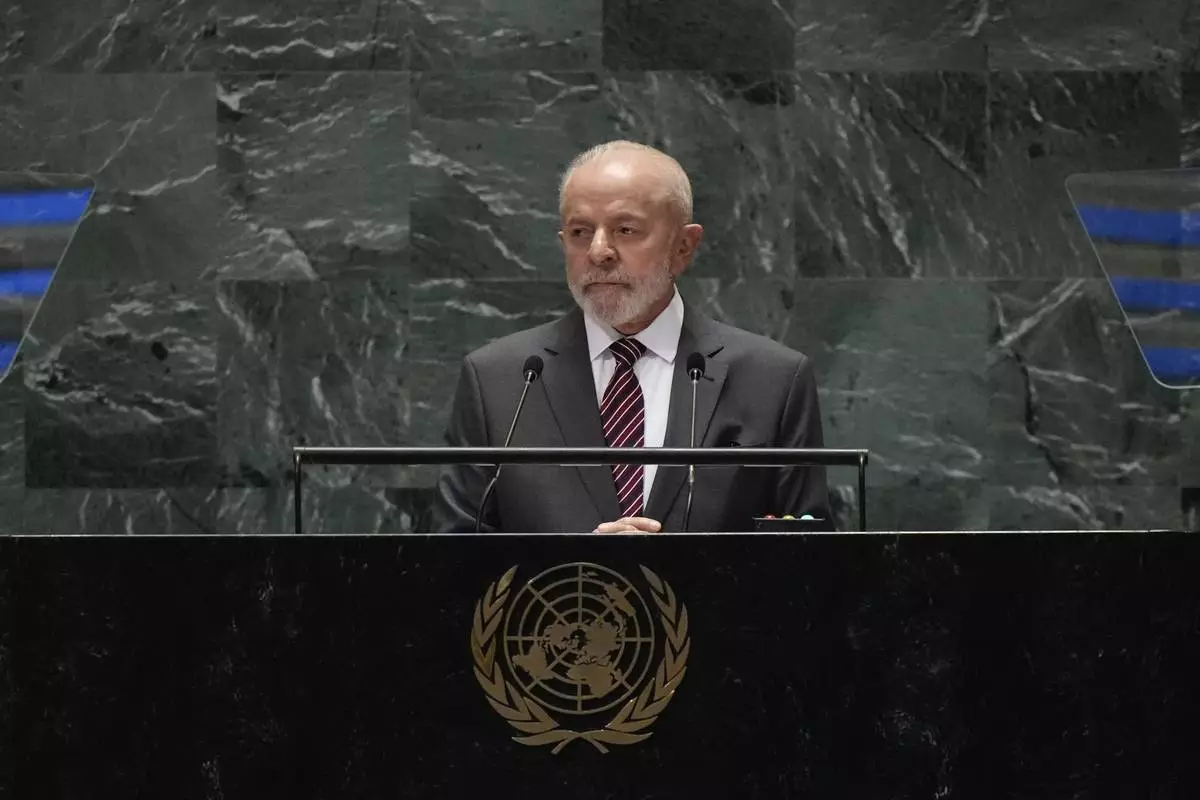
Brazil's President Luiz Inacio Lula da Silva speaks to the United Nations General Assembly during the Summit for the Future, Sunday, Sept. 22, 2024 at U.N. headquarters. (AP Photo/Frank Franklin II)












